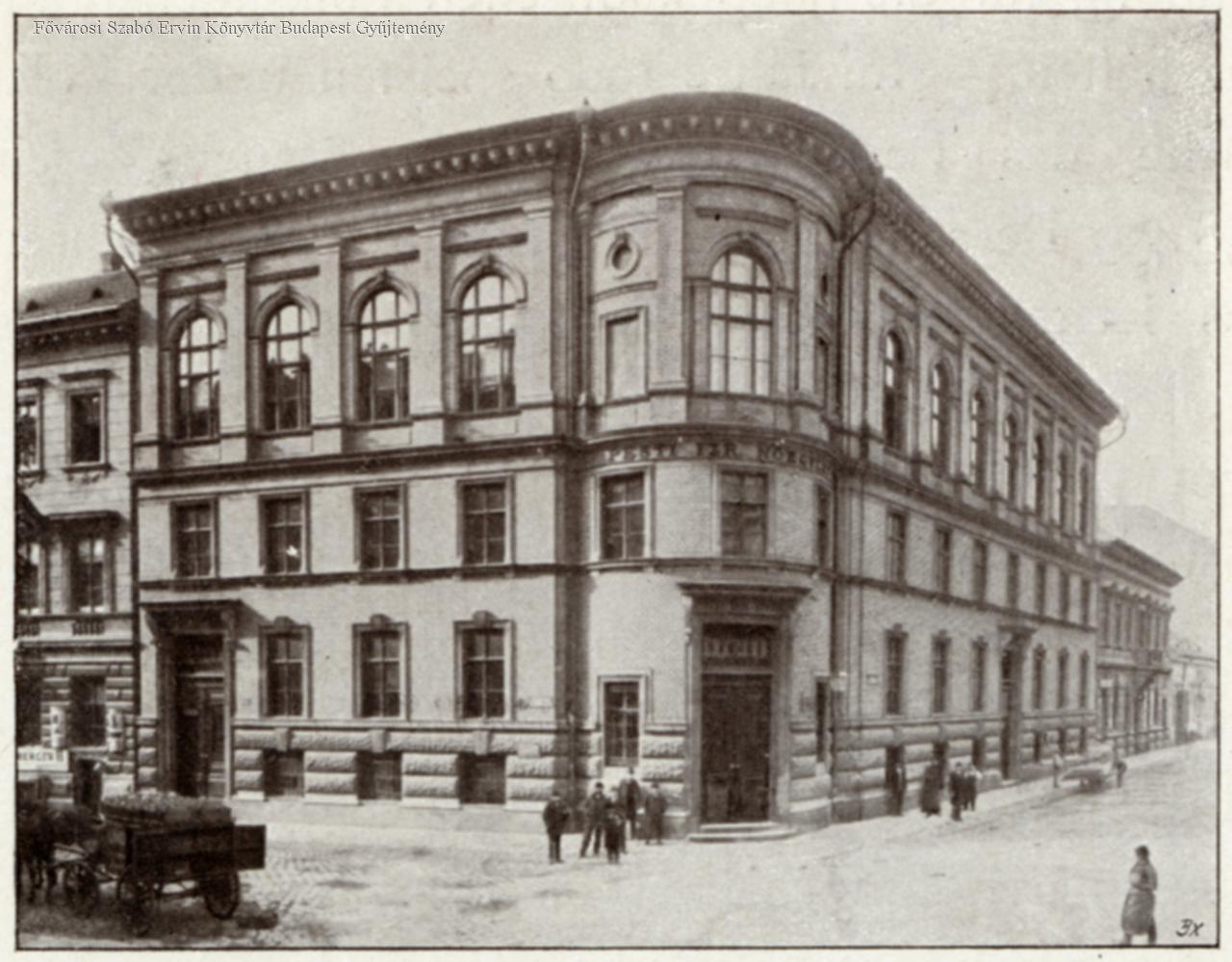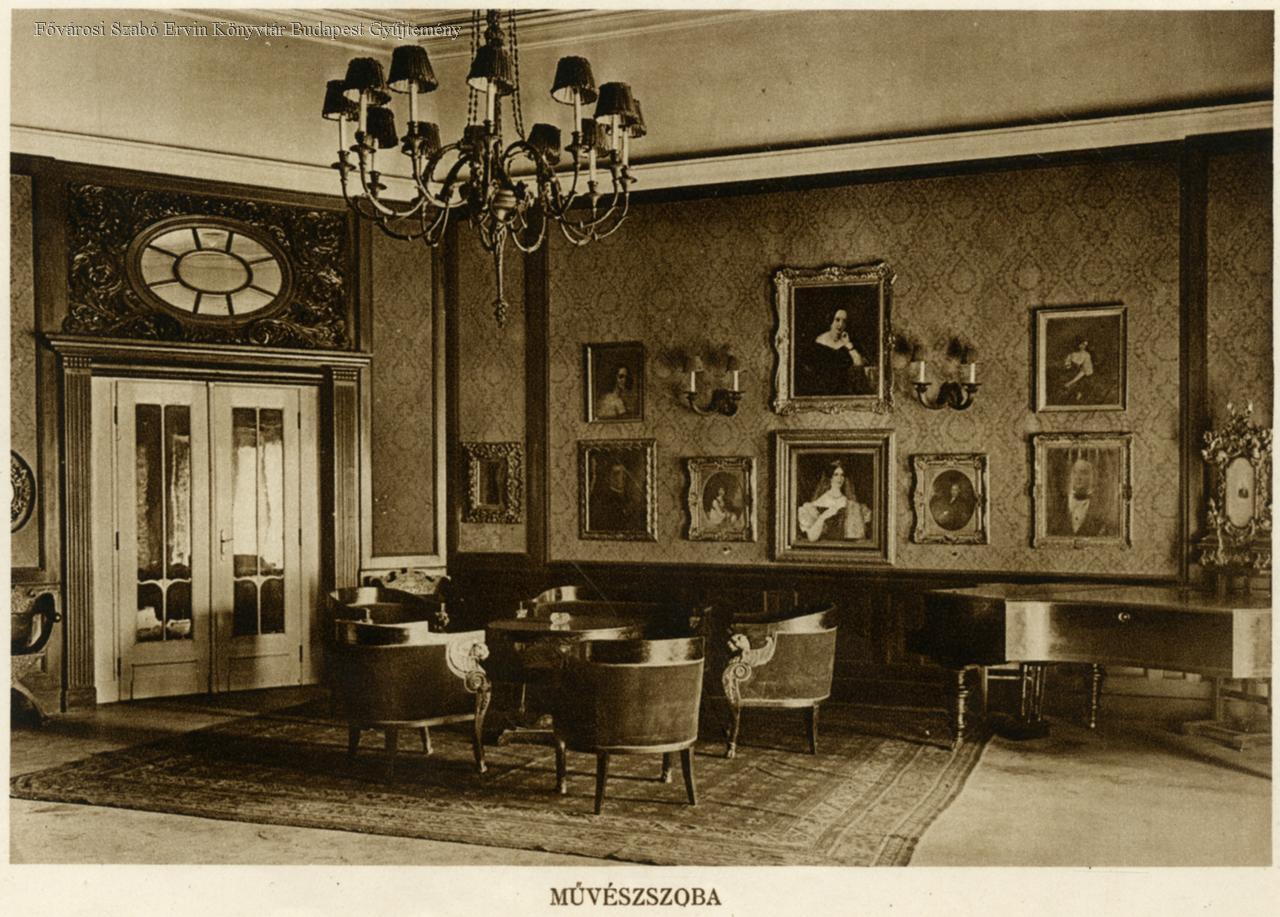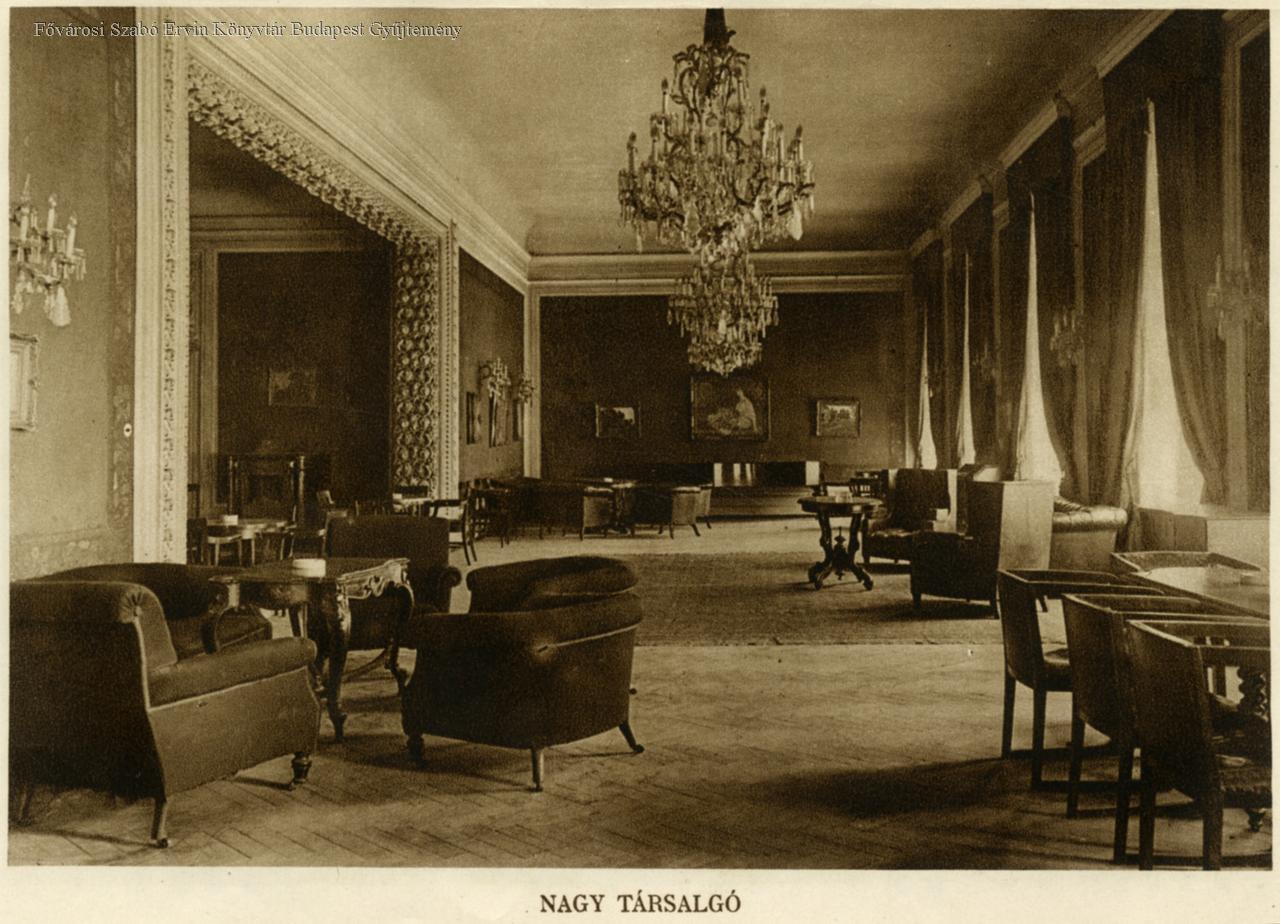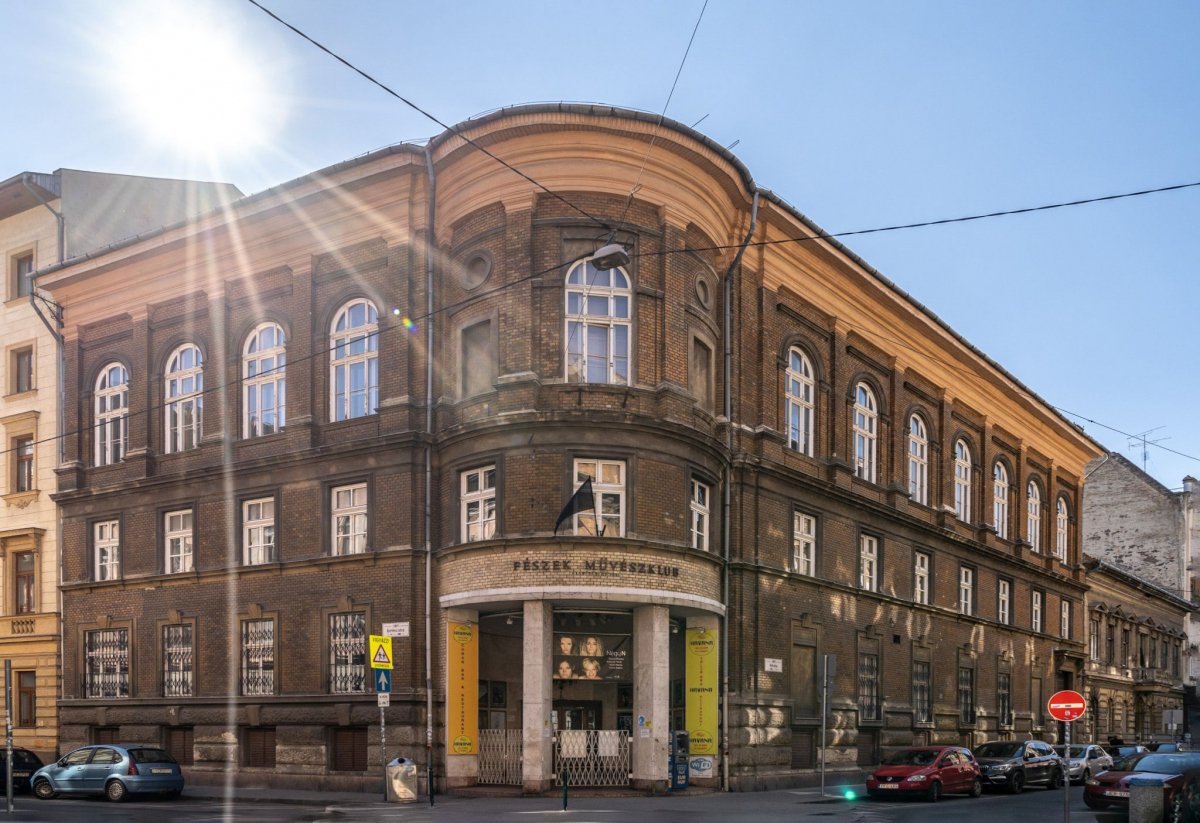It is certainly interesting to know how a famous artists' club like the Fészek Klub, which opened on the corner of Kertész Street and Dob Street on 7 September 1901, 120 years ago, came to be. The answer was given by Ákos Tolnay, painter and one of the founders of the Fészek Klub, in a publication covering the first 25 years of the club:
"One day we thought we should start an artists' club, where we could be alone without disturbance." I liked the idea, and from that day on, the idea of founding a club was a constant topic... But to make the club comfortable and enjoyable, we needed more members than we - all the artists together - had. In Hungary at that time, there were hardly more than one hundred and twenty to one hundred and fifty graphic artists, a certain percentage of whom were not even real artists... That's when the idea of trying to involve other kind of artists and to create together a worthy artists' studio came up... „
The Fészek Művészklub ['Nest' Artists' Club] was founded as an association in the spring of 1901, and the members decided to buy their own headquarters. Many of them have donated their membership fees or part of their income for this purpose. The choice finally fell on the building on the corner of Kertész and Dob Streets, which at the time housed the girls' orphanage of the Israelite Women's Association of Pest. The original building of 1885-86, designed byVilmos Freund, arenowned architect of the time, boasted modern technical equipment - sewerage, plumbing, gas lighting. But that was not the only reason why the artists chose the building.

The ground floor and the first floor of the building on the corner of Dob Street and Kertész Street were rented by the Fészek Klub in 1901. The house, which was built according to the plans of Vilmos Freund, was originally the orphanage of the Israelite Women's Association of Pest (Source: FSZEK Budapest Collection)
As Zsuzsa Bánóci points out in her study Fészek Művészek Klubja 1901-1949, the future headquarters was ideally located.The National Theatre, the New York Palace, the Academy of Music, the Opera House, the Old Kunsthalle, and even the Epreskert were nearby. So the ground floor and the first floor of this building were rented by Fészek Klub, while the orphanage - using the income - moved to a larger building.
In the summer of 1901, the Israelite Women's Association of Pest and the Fészek Klub jointly commissioned the architect Márton Főző to remodel the corner building. The renovation was probably not very significant at that time, because on the 7th of September the artists already moved into the new headquarters, where a family dinner was held that day and an art event ten days later.
According to contemporary records and recollections, the association had no capital left for the equipment: there were no curtains or carpets, but the walls were decorated with valuable paintings donated by members.
 The Fészek Klub was completely remodelled in the early 1920s, and in addition to club life, it also provided opportunities for professional performances of artists (Source: FSZEK Budapest Collection)
The Fészek Klub was completely remodelled in the early 1920s, and in addition to club life, it also provided opportunities for professional performances of artists (Source: FSZEK Budapest Collection)
The house was finally purchased by Fészek in 1921, and two years later, it was completely remodelled according to the plans of architects Zoltán Bálint and Lajos Jámbor. The garden was completed in the old Italian Renaissance style, with covered arcades and upper terraces, and the so-called great hall was built, which opened onto the games rooms. The restaurant has been moved from the first floor to the ground floor, replacing it with a library and meeting room. In addition to club life, great emphasis was placed on providing opportunities for professional performances by artists, so there was also a stage and a music room in the building.
 The lounge at the Fészek Klub (Source: FSZEK Budapest Collection)
The lounge at the Fészek Klub (Source: FSZEK Budapest Collection)
The Fészek Klub was not only famous for its cultural life, but also for its card room, where the income from card games was used for maintaining the institution for decades, which enjoyed its heyday between the two world wars. It has hosted major events such as the World Congress of the PEN Club, held here in 1932.

For decades, the revenue from card games provided a secure source of funding for the institution (Source: FSZEK Budapest Collection)
 The Renaissance-style garden, surrounded by arcades, was built during the remodelling in the first half of the 1920s, according to the plans of architects Zoltán Bálint and Lajos Jámbor (Source: FSZEK Budapest Collection)
The Renaissance-style garden, surrounded by arcades, was built during the remodelling in the first half of the 1920s, according to the plans of architects Zoltán Bálint and Lajos Jámbor (Source: FSZEK Budapest Collection)
.jpg)
After renovations in the 1960s, only the garden remains as originally planned (Source: Fortepan/No.: 159383)
During the Second World War, the building, which stood on the edge of the ghetto, was badly damaged by several bomb attacks. After the siege, the clubhouse was restored with government support and the work of its members, and in the 1950s it was renamed Művészeti Szövetségek Háza and operated by the Artistic Unions, then in 1958 it got back the name Fészek Művész-klub. The building was completely renovated and rebuilt in 1964, leaving only the garden in its original form.

The Fészek Klub seen from Kertész Street (Photo: Balázs Both/pestbuda.hu)
Cover photo: the Fészek Klub building at Dob Street- Kertész Street (Photo: Balázs Both/pestbuda.hu)




































